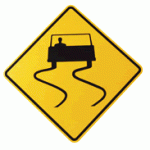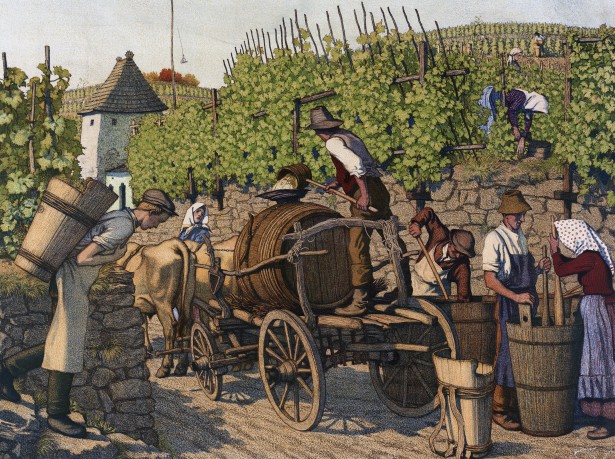
You’re marketing your wine as best you can. Your tasting room and winery are the best possible showcase for your brand. You fuss over your website. You worry about social media channels. You’ve sampled lots of wine writers. You’ve invited local writers to come see you at your winery. You spend a lot of time creating just the perfect eblast to go out to your consumer mailing list. You curry favor with your distributors to the best of your ability.
What’s left?…….Hit the road, Jack (as the song goes) and start marketing your wine right.
They don’t know you in Poughkeepsie or Tucson or San Antonio, right? But where to start? Should you travel to a city just to meet journalists? The answer would be no Here are some tips for how to really maximize a market visit.
1. HIT ALL THE TIERS
For every day when you’re traveling, try to hit all the tiers of our business.That would mean that every day should ideally include time with a distributor salesperson; time calling on accounts—whether that’s a fine wine shop, a chain wine store, a mom-and-pop bistro or a white-tablecloth high-end restaurant and some type of activity or event where you meet ‘real’ customers. That could mean a ‘bottle signing’ or tasting event at a wine store or a winemaker dinner. Or here’s another idea. Something a lot of wineries are setting up these days: find a good customer from your mailing list and ask if they’d host a Tasting Party or Winemaker Dinner at their home. They can invite friends; you will provide the wine and possibly the dinner or hors d’oeuvres. Depending on the state you’re in, you may be able to take orders and help the partygoers to buy your wine. At the very least, you will have had ‘face time’ with real people, who now know a Vintner and will take away warm memories of a wonderful evening (and certainly promise to come see you back at the winery sometime).
2. GIVE A TALK
What about being a guest speaker at a wine education seminar while o the road? These days lots of wine stores and Whole Foods-type emporia offer wine classes and would welcome a visiting vintner expert to be a guest teacher.
3. THE OLD FASHIONED COLD CALL
If your local distributor can’t provide salespeople to work with you, make cold calls. That’s right. Walk into stores and restaurants. Introduce yourself: ask them what makes their business different and what it would take to have them consider selling your wine. As hopeless as cold calling might sound, if you’re there in person to represent your winery and ask for an order, there’s a greater likelihood you’ll get an order than if you weren’t there. Some states don’t allow a vintner to open wine and taste the wine at an account without a sales rep there, so keep that in mind. Remember also that cold calling means the account might not be available to hear your spiel: so be prepared to introduce yourself and spend money if possible, but don’t expect the account to always be able to stop what they’re doing and taste your wine with you.
take to have them consider selling your wine. As hopeless as cold calling might sound, if you’re there in person to represent your winery and ask for an order, there’s a greater likelihood you’ll get an order than if you weren’t there. Some states don’t allow a vintner to open wine and taste the wine at an account without a sales rep there, so keep that in mind. Remember also that cold calling means the account might not be available to hear your spiel: so be prepared to introduce yourself and spend money if possible, but don’t expect the account to always be able to stop what they’re doing and taste your wine with you.
4. HOLD A SALES MEETING
Always ask to be a speaker at the distributor’s sales meeting when you are in town. And be memorable. Surprise them when you show up with a big box of doughnuts or another treat. Make sure you come across as a real person—warm, friendly, eager to help them succeed. And of course, bring your wines and all the materials you can to leave with the sales reps.
5. REMEMBER YOU MAY NOT BE THE ONLY VINTNER IN TOWN
Maybe you’re going to a city for a big wine event, such as a charity wine auction. That’s great. But. You’ll be one of many vintners on the scene. Get ready: you need to manage your expectations. For example, the local media may not know what to do with a swarm of wine folk. There will be so many stories that it may overwhelm the local writers. You may also hear that they really don’t want to profile people who don’t live in their area—as funny as that sounds, I’ve heard that many times over the years. Unless the journalist is really an inquiring mind, why should someone in Denver really care about how you make your Cabernet? Especially if that journalist isn’t normally on a wine or food beat?
Here’s where you can get creative, though. Are you a gardener? Do you have a favorite type of flower you cultivate? Do you have honeybees? Do you have bird boxes to support a vineyard parasite ecosystem? Do you make a killer mac-and-cheese? Are you an expert on the BBQ with your own unique way to grill a steak? What about in the business realm? Is there some aspect of your operation which might surprise people—do you have an app of your own? Solar power in the vineyard? In other words, seek out writers who don’t specialize in wine; find the feature writers and editors, who may be intrigued with a food or garden angle. And, don’t forget to check the local radio scene: there may be a food and wine program in that city, or a morning radio host who’s a wine aficionado who welcomes vintner visitors.
 6. HOLD YOUR OWN EVENT
6. HOLD YOUR OWN EVENT
Maybe you’re launching a new wine or a new vintage or maybe you just have all your current release wines. Invite a room full of trade customers to stop by the restaurant where you’ve taken a room and let them taste at their own leisure. And be sure to include a journalist or two on the invite list.
7. MEET THE PRESS
Call ahead and make appointments to meet with wine and food writers in the area.Even if there isn’t a full-time wine writer at the local paper, there’s always a business writer. If your elevator speech is as persuasive as possible, you should be able to entice even the most hard-bitten business editor to sit down and hear about your slice of life in the wine business. Use some current news to start the conversation: for example, even people who aren’t in the wine business know about the recent trial in New York of a wine forger or maybe it’s the wine that Brad Pitt and Angelina Jolie are making in France. The point is that you could use a tidbit from the real world to connect the dots to your wines and winery and get a sit down with a writer.
Here’s another tip. Make it easy for the journalist. Offer to have breakfast or a pre-work cup of coffee. Offer to bring a sandwich or picnic lunch to them at their desk. Don’t expect to go to dinner; offer to meet them for an after-work pre-dinner glass of wine. That said, after you’ve broken bread and clinked wine glasses and had a leisurely and lengthy conversation over a meal with a journalist, it won’t soon be forgotten: this is how you start on the path to being a source, someone who can be called when the writer’s researching a topic six months down the road.
Yet another rule to keep in mind: just because you’ve met with a journalist doesn’t mean that they will write an article about you and your wines or profile you and your winery: they may have to propose the idea to an editor, they may get swamped with other priorities and news–don’t be disheartened! You’ve made the connection and it may take time to bear fruit.
8. EXAMPLES OF GREAT “ROAD SHOWS”
Once a Napa wine family went to one city for a week. They blanketed that city with their entire family. Swarms of them. Ostensibly they were going for a charity wine auction, but in fact every day was chock full of  events featuring not only for the paterfamilias of the clan, but also the grown children as well. Every night there was a winemaker dinner at a different restaurant. Most days there were events at numerous wine shops, whether it was the opportunity to buy a signed bottle, or just to meet Mr. Vintner or a member of his family, or to sit down in the store for a tutored tasting. Upscale food stores hosted members of the family for receptions and the winery’s chef presided over cooking demonstrations. Bookstores did book signings (the family had several books they’d written). The family was also focused on wine and health messaging; there were events playing out that theme as well. This was the definition of a market blitz: maybe not something a lot of wineries could do, but there are ideas here to borrow from, even if your winery doesn’t have a chef, you haven’t written a memoir or your family is small
events featuring not only for the paterfamilias of the clan, but also the grown children as well. Every night there was a winemaker dinner at a different restaurant. Most days there were events at numerous wine shops, whether it was the opportunity to buy a signed bottle, or just to meet Mr. Vintner or a member of his family, or to sit down in the store for a tutored tasting. Upscale food stores hosted members of the family for receptions and the winery’s chef presided over cooking demonstrations. Bookstores did book signings (the family had several books they’d written). The family was also focused on wine and health messaging; there were events playing out that theme as well. This was the definition of a market blitz: maybe not something a lot of wineries could do, but there are ideas here to borrow from, even if your winery doesn’t have a chef, you haven’t written a memoir or your family is small
Another example of a successful roadshow came in 2012 when Silver Oak Cellars staged an elaborate tour of the U.S. with their signature water tower. All over the country, using social media and lots of advance legwork, in sixty cities, people showed up to see the tower, taste the wine, meet the people. Huge logistics, yes, but this generated tons of chatter and visibility.
9. THE BOTTOM LINE
The bottom line, as we all know, is that traveling is expensive. If you’re going on the road, maximize the time by meeting as many people as you can, hitting all of the channels of our business. In our screen-dominated world, true ‘face’ time is priceless.





